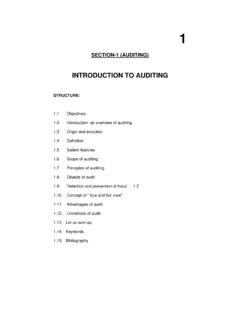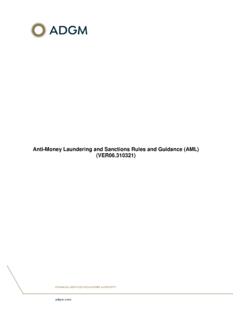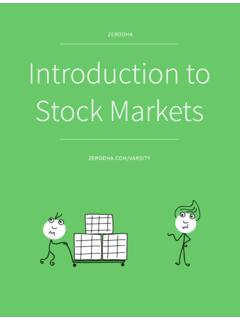Transcription of FATF REPORT Virtual Assets Red Flag Indicators
1 FATF REPORTV irtual Assets Red flag Indicatorsof money Laundering and Terrorist FinancingSeptember 2020 The Financial Action Task Force (FATF) is an independent inter-governmental body that develops and promotes policies to protect the global financial system against money laundering, terrorist financing and the financing of proliferation of weapons of mass destruction. The FATF Recommendations are recognised as the global anti- money laundering (AML) and counter-terrorist financing (CFT) standard. For more information about the FATF, please visit This document and/or any map included herein are without prejudice to the status of or sovereignty over any territory, to the delimitation of international frontiers and boundaries and to the name of any territory, city or area.
2 Citing reference: FATF (2020), money Laundering and Terrorist Financing Red flag Indicators Associated with Virtual Assets , FATF, Paris, France, 2020 FATF/OECD. All rights reserved. No reproduction or translation of this publication may be made without prior written permission. Applications for such permission, for all or part of this publication, should be made to the FATF Secretariat, 2 rue Andr Pascal 75775 Paris Cedex 16, France (fax: +33 1 44 30 61 37 or e-mail: Photocredits coverphoto Gettyimages Table of Contents Acronyms 2 introduction 3 Methodology and sources used in drawing up the list of red flag Indicators 4 Issues to note when reading this REPORT 4 Red flag Indicators 55 7 9 12 15 Red flag Indicators Related to Transactions Red flag Indicators Related to Transaction PatternsRed flag Indicators Related to Anonymity Red flag Indicators about Senders or Recipients Red flag Indicators in the Source of Funds or Wealth Red flag Indicators Related to Geographical Risks 17 Conclusion 19 References 202 Virtual Assets RED flag Indicators OF money LAUNDERING AND TERRORIST FINANCING FATF/OECD 2020 Acronyms AEC Anonymity enhanced cryptocurrency CDD Customer)
3 Due diligence DNFBPs Designated non-financial businesses and professions DNS Domain name registrars FATF Financial Action Task Force FIs Financial Institutions FIUs Financial Intelligence Units ICO Initial Coin Offering KYC Know-your-customer LEAs Law enforcement authorities ML money Laundering STRs Suspicious Transaction Reports TF Terrorist Financing VA/VAs Virtual Assets VASPs Virtual asset Service Providers Virtual Assets RED flag Indicators OF money LAUNDERING AND TERRORIST FINANCING 3 FATF/OECD 2020 introduction 1. Virtual Assets (VA) and related services have the potential to spur financial innovation and efficiency, but their distinct features also create new opportunities for money launderers, terrorist financiers, and other criminals to launder their proceeds or finance their illicit activities.
4 The ability to transact across borders rapidly not only allows criminals to acquire, move, and store Assets digitally often outside the regulated financial system, but also to obfuscate the origin or destination of the funds and make it harder for reporting entities to identify suspicious activity in a timely manner. These factors add hurdles to the detection and investigation of criminal activity by national authorities. 2. In October 2018, the Financial Action Task Force (FATF) updated its Standards to clarify the application of the FATF Standards to VA activities and Virtual asset Service Providers (VASPs) in order to, among other things, assist jurisdictions in mitigating the money laundering (ML) and terrorist financing (TF) risks associated with VA activities and in protecting the integrity of the global financial system.
5 In June 2019, the FATF adopted an Interpretative Note to Recommendation 15 to further clarify the application of FATF requirements to VA activities or operations and VASPs, including with respect to suspicious transaction reporting. 3. The FATF has prepared this brief REPORT on ML/TF red flag Indicators associated with VAs to assist reporting entities, including financial institutions (FIs), designated non-financial businesses and professions (DNFBPs), and VASPs; however, they are categorised, in identifying and reporting potential ML and TF activity involving VAs. This REPORT should also facilitate reporting entities application of a risk-based approach to their Customer Due Diligence (CDD) requirements, which require knowing who their clients and the beneficial owners are, understanding the nature and purpose of the business relationship, and understanding the source of funds.
6 4. Operational agencies including Financial Intelligence Units (FIUs), law enforcement authorities (LEAs), and prosecutors may find this REPORT a useful reference for analysing suspicious transaction reports (STRs) or improving detection, investigation, and confiscation of VAs involved in misuse. 5. Financial, DNFBP, and VASP regulators, on the other hand, may find these Indicators useful when preparing STRs and monitoring for entities compliance with AML/CFT controls. Where a reporting entity has information indicating the existence of one or more Indicators without logical business explanation, but fails to file an STR despite a customer s inconsistent explanation or fails to seek clarification on the transaction, competent authorities may consider following up with the reporting entity taking into account the latter s business profile.
7 4 Virtual Assets RED flag Indicators OF money LAUNDERING AND TERRORIST FINANCING FATF/OECD 2020 Methodology and sources used in drawing up the list of red flag Indicators red flag Indicators included in this REPORT are based on more than onehundred case studies contributed by jurisdictions from 2017-2020, the findings ofthe Confidential FATF REPORT on Financial Investigations Involving Virtual Assets (June2019) and the published FATF REPORT Virtual Currencies Key Definitions and PotentialAML/CFT Risks (June 2014), as well as information on the misuse of VAs available inthe public in use of VAs for ML/TF purposes The majority of VA-related offences focused on predicate or ML offences. Notwithstanding, criminals did make use of VAs to evade financial sanctions and to raise funds to support terrorism.
8 The types of offences reported by jurisdictions include ML, the sale of controlled substances and other illegal items (including firearms), fraud, tax evasion, computer crimes ( cyberattacks resulting in thefts), child exploitation, human trafficking, sanctions evasion, and TF. Among these, the most common type of misuse is illicit trafficking in controlled substances, either with sales transacted directly in VAs or the use of VAs as an ML layering technique. The second most common category of misuse is related to frauds, scams, ransomware, and extortion. More recently, professional ML networks have started exploiting VAs as one of their means to transfer, collect, or layer proceeds.
9 Source: Case studies contributed by jurisdictions from 2017-2020 Issues to note when reading this REPORT Indicators are specific to the nature of VAs and their associated financialactivities, and are by no means exhaustive. Suspicious activities involving the use ofVAs may also share similar traits with ML/TF activities involving the use of fiatcurrency, or other kinds of Assets . Reporting entities should therefore consider therisks posed by their customers, products, and operations, as well as the presence ofconventional risk Indicators . Red flag Indicators should always be considered red flags such as those listed below can be developed orcombined with information from operational agencies, which can in turn be furtherdeveloped through a public-private partnership, in a cyclical, evolutionary processthat takes into account the unique risk and context of a jurisdiction, customer type,or the reporting entity itself.
10 The mere presence of a red flag indicator is notnecessarily a basis for a suspicion of ML or TF, but could prompt further monitoringand examination. Ultimately, a client may be able to provide an explanation to justifythe red flag indicator , business or economic purposes of a Assets RED flag Indicators OF money LAUNDERING AND TERRORIST FINANCING 5 FATF/OECD 2020 9. When evaluating potential suspicious activity, competent authorities, FIs, DNFBPs, and VASPs should be mindful that some red flag Indicators might be more readily observable during general transactional monitoring, while others may be more readily observable during transaction-specific reviews. The observation of one or more of the Indicators is dependent on the business lines, products, or services that an institution or VASP offers and how it interacts with its customers.














